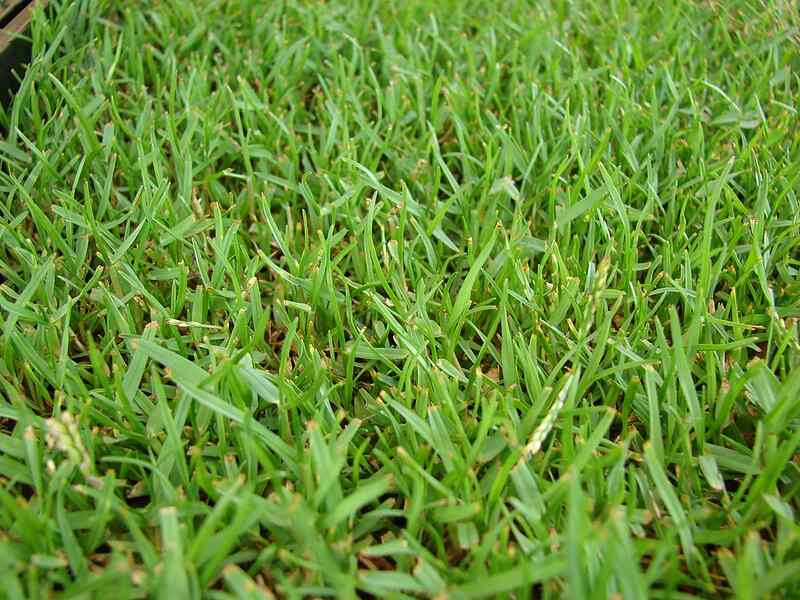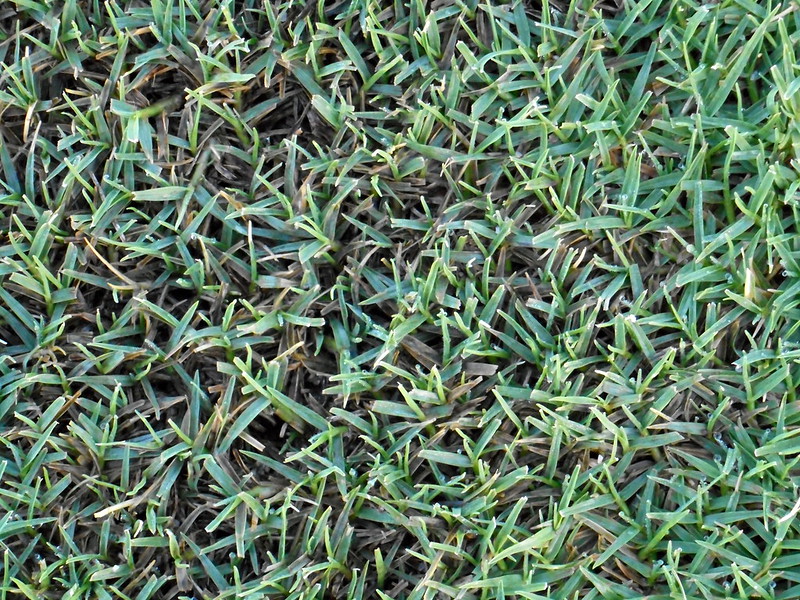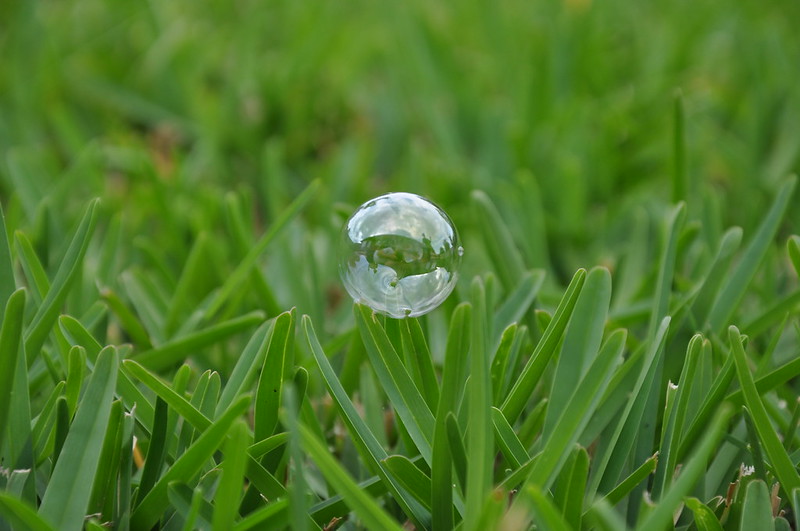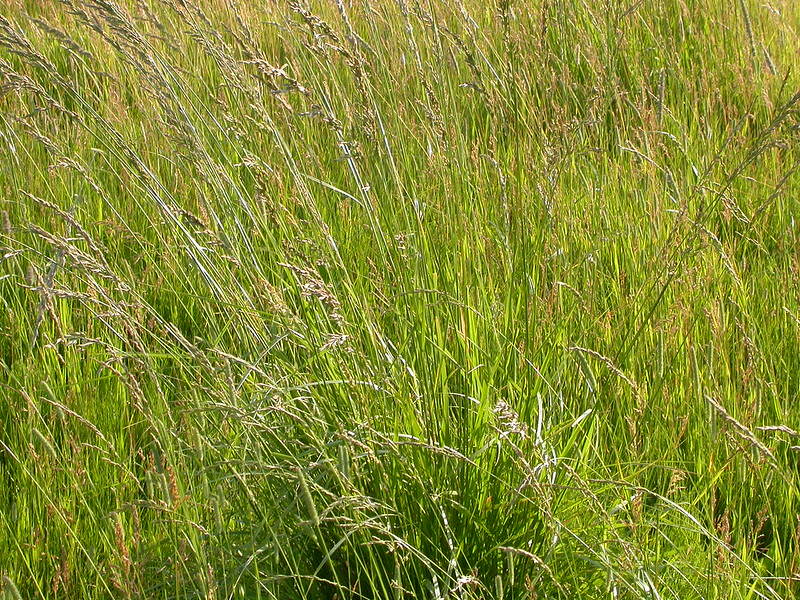4 Best Grass Types for San Diego, CA
BY RELA CATUCOD | APRIL 5TH, 2023 | CALIFORNIA, LAWN CARE, SAN DIEGOChoosing the best grass type for San Diego is essential for cultivating a lush, resilient lawn that withstands foot traffic from impromptu Martini cocktail nights, weekend barbecues, and your Comic-Con afterparty. In this article, discover the top grass types for San Diego yards to elevate your landscape and create the perfect backdrop for your SoCal lifestyle.
San Diego’s Mediterranean climate, with warm, sunny summers and mild, wet winters, calls for grass types that thrive in these conditions. We’ll examine four exceptional choices: zoysiagrass, bermudagrass, St. Augustinegrass, and tall fescue. Keep in mind that factors like foot traffic, shade tolerance, and water restrictions will influence the ideal grass type for your lawn.
Warm-Season vs. Cool-Season Grasses
When it comes to selecting the perfect grass type for your San Diego lawn, understanding the difference between warm-season and cool-season grasses is crucial. Warm-season grasses thrive in San Diego’s sunny climate, as they require higher temperatures and can withstand drought conditions better than cool-season grasses.
On the other hand, cool-season grasses are better suited for regions with cooler temperatures and may struggle in San Diego’s warmer climate. However, some heat-tolerant cool-season grasses can still thrive in the region’s climate.
4 Best Grasses for San Diego
San Diego’s climate is best suited for a select mix of warm-season and cool-season grass varieties. While warm-season grass types grow vigorously during late spring and summer, going dormant during cooler, wetter winter months, heat-tolerant cool-season grasses can also thrive in San Diego’s milder conditions.
Both warm-season and cool-season grasses are ideal for the region, as they can withstand the heat, drought, and occasional cooler temperatures experienced in San Diego County.
1. Zoysiagrass

Photo Credit: Forest & Kim Starr / Wikimedia Commons / CC BY 3.0 US
Zoysiagrass is a top choice for homeowners in San Diego who appreciate its fine texture, dense growth, and ability to tolerate moderate foot traffic. This grass type not only provides a luxurious feel underfoot but also creates a picturesque setting for those outdoor yoga sessions or sipping a couple Martinis on a warm San Diego evening.
This warm-season grass variety is well-suited to Southern California’s climate, as it thrives in full sun and is more resistant to heat and drought conditions than cool-season grasses. With its low maintenance requirements and ability to withstand foot traffic, Zoysiagrass is a wise investment for San Diego homeowners who want to conserve resources while still enjoying their outdoor lifestyle in America’s Finest City.
Classification: Warm-season grass
Spreads by: Rhizomes and stolons
Shade tolerance: Moderate
Drought resistance: Moderate to High
Foot traffic tolerance: High
Maintenance needs: Low nitrogen fertilization requirements, although, it’s prone to thatch build-up.
Mowing height: Set mowing height between 1 and 2 inches
Potential for disease: Good disease tolerance overall
Potential for pests: Moderate — grubs can cause serious damage
Soil pH: 6 to 6.5
Soil type: Adaptable to various soil types, prefers well-draining soils
Other notes: Zoysiagrass establishes slowly, so patience is required when starting a new lawn.
2. Bermudagrass

Photo Credit: Scot Nelson / Flickr / CC0 1.0
Bermudagrass is a top choice for San Diego homeowners who want a robust, attractive lawn that can handle everything from family picnics to sports games in the backyard. With its fine-to-medium texture and fast-spreading growth habit, bermudagrass creates a durable, carpet-like surface that invites you to kick off your shoes, relax, and enjoy an ice-cold glass of California Chardonnay after a long day of surfing at La Jolla Shores.
This warm-season grass variety is perfectly suited to San Diego’s sunny, coastal climate, offering excellent heat and drought resistance. Bermudagrass requires minimal water to maintain its vibrant green hue, making it an water-wise option for homeowners looking to conserve resources while still keeping their outdoor oasis looking stunning.
Classification: Warm-season grass
Spreads by: Rhizomes and stolons
Shade tolerance: Low — thrives in full sun
Drought resistance: High
Foot traffic tolerance: High
Maintenance needs: Needs frequent mowing due to fast growth rate; develops thatch easily; needs regular fertilization
Mowing height: Set mowing height between 0.5 and 1.5 inches hybrid Bermudagrass cultivars. Mow common Bermudagrass down to 1.5 to 2.5 inches.
Potential for disease: Good resistant to disease, although disease are common
Potential for pests: Low resistant to insects
Soil pH: 6 to 6.5
Soil type: Tolerates most soil types
Other notes: Bermudagrass goes dormant during the cooler winter months, turning brown until temperatures rise again in the spring. To maintain a green appearance year-round, consider overseeding with a cool-season grass like perennial ryegrass.
3. St. Augustinegrass

Photo Credit: Jay Morgan / Flickr / CC BY-ND 2.0
St. Augustinegrass is the most shade-tolerant warm-season grass, making it an attractive choice for homeowners with established trees or pergolas casting shadows on their property.
With its broad, flat blades and thick, carpet-like growth, St. Augustinegrass provides a comfortable and inviting surface for both relaxation and play, making it the ideal backdrop for your next family luau or sunset-viewing party.
Adapting well to San Diego’s coastal climate, this salt-tolerant variety boasts exceptional heat and drought tolerance. By investing in St. Augustinegrass, you can create a stunning, blue-green lawn that enhances the beauty of your outdoor space. However, keep in mind that this grass type has a low-traffic tolerance.
Classification: Warm-season grass
Spreads by: Stolons
Shade tolerance: Moderate. It is the most shade tolerant warm-season grass.
Drought resistance: Moderate to High
Foot traffic tolerance: Low
Maintenance needs: Needs frequent mowing due to fast growth rate; develops thatch easily; needs regular fertilization
Mowing height: Set mowing height between 3.5 and 4 inches
Potential for disease: Moderate to High; prone to brown patch, gray leaf spot, and take-all root rot
Potential for pests: Moderate; prone to chinch bugs, sod webworms, and grubs
Soil pH: 6 to 7.5
Soil type: Adaptable to various soil types, prefers moderately fertile and moist (not waterlogged) soils; doesn’t tolerate soil compaction
Other notes: St. Augustinegrass has poor tolerance for cold. Thatch could be a big problem, so dethatching regularly is recommended.
4. Tall Fescue

Photo Credit: Matt Lavin / Flickr / CC BY-SA 2.0
Tall fescue is an excellent choice for San Diego homeowners seeking a versatile, low-maintenance lawn that offers a touch of green during the city’s cooler months. With its fine-to-medium texture and moderate foot-traffic tolerance, tall fescue establishes a dense, hardy turf suitable for hosting outdoor movie nights or sipping craft IPAs with friends in your backyard sanctuary.
Though a cool-season grass, tall fescue has adapted well to the Southern California climate, demonstrating impressive heat and drought resistance. Its ability to withstand both full sun and moderate shade makes it an appealing option for homeowners with diverse landscape conditions.
Classification: Cool-season grass
Spreads by: Produces short rhizomes but has a bunch-type growth habit
Shade tolerance: Moderate
Drought resistance: Moderate to High
Foot traffic tolerance: Moderate
Maintenance needs: Moderate; requires frequent mowing, does not produce significant thatch
Mowing height: Set mowing height to 2 inches when grass reaches 3 inches tall
Potential for disease: Low; tolerant of most diseases when properly maintained
Potential for pests: Moderate; prone to armyworms, white grubs, and cutworms
Soil pH: 5.5 to 6.5
Soil type: Adaptable to various soil types, but prefers clay soils with good drainage
Other notes: Tall fescue is not an ideal choice for homes situated at high altitudes. While it maintains its green hue in cooler temperatures, it may struggle to stay vibrant during harsh winter conditions.
FAQ About San Diego Grass Types
In general, lawns need about 1 inch of water per week, either through rainfall or supplemental irrigation. Water deeply and infrequently, allowing the soil to dry between watering sessions to encourage deep root growth. However, be sure to follow local water restrictions and guidelines to ensure responsible water usage.
The type and frequency of fertilizer application depend on your chosen grass type and specific soil conditions. It’s best to conduct a soil test to determine the nutrient needs of your lawn. In general, warm-season grasses benefit from fertilization during summer, while cool-season grasses should be fertilized in the fall.
The best time to seed warm-season grasses in San Diego is late spring or early summer when soil temperatures are consistently warm. Cool-season grasses, like tall fescue, can be seeded in fall or early spring.
To prevent lawn pests and diseases, maintain proper lawn care practices such as regular mowing, fertilization, and irrigation. Additionally, avoid overwatering and over-fertilizing, as these can create conditions favorable for pests and diseases. If you notice signs of an infestation or disease, consult a local lawn care pro for advice on treatment options.
Choose Plant and Grass Varieties for Your San Diego Landscape
Incorporating native plants and low-maintenance landscaping ideas into your San Diego lawn design can create a stunning, eco-friendly outdoor space. By choosing grass types suited to the local climate and combining them with other drought-tolerant plants, you’ll be investing in a sustainable, easy-to-care-for landscape that complements San Diego County’s natural beauty.
When choosing a grass type for your home, consider the following factors:
- Foot traffic: Choose a grass type that can withstand your outdoor lifestyle.
- Shade tolerance: Select a grass type that thrives in your lawn’s specific light conditions.
- Heat tolerance: Since San Diego has a warm climate, opt for grasses that can handle high temperatures and maintain their health.
- Drought tolerance: Water conservation is crucial in San Diego, so choose grasses that can thrive with minimal water usage.
- Maintenance requirements: Consider how much time and effort you’re willing to invest in lawn care, and choose a grass type that aligns with your desired level of maintenance.
If you require assistance with lawn care, don’t hesitate to contact a San Diego lawn care pro. They can provide valuable advice and services tailored to your specific needs, ensuring your lawn remains healthy, lush, and inviting all year round.
Main Photo by: Pxhere